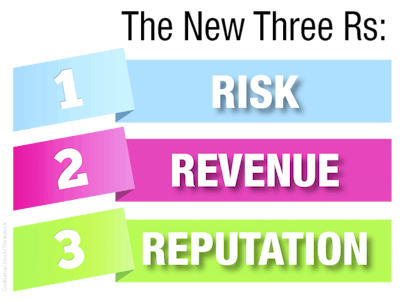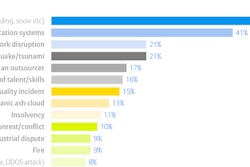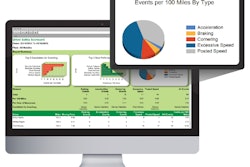
Running a business is a naturally risky proposition. Though many aspects of the marketplace will inevitably remain beyond your control, the one thing you can control is reducing your exposure to risk within various areas of your operations, including the supply chain.
Recognizing this opportunity that lies ahead, Bob Ferrari of the Ferrari Consulting and Research Group recently predicted that in 2014, improved global sourcing strategies will emerge in response to supply chain risks and major disruptions. “Dual or alternative sourcing strategies among strategic suppliers will become ever more important and will drive some new sourcing patterns that include different or diverse geographies to balance risk,” Ferrari noted.
Effective supply chain risk management programs recognize that things won’t always go according to plan and help you build a more resilient business in response. This involves assessing your current risk factors—from small to large supply chain disruptions—and then developing strategies to manage them, which we’ll outline here.
The Three Rs: Risk, Revenue and Reputation
The risks of supply chain disruptions, to both your revenue and reputation, aren’t limited to first-tier suppliers and customers. So why should you limit your risk management programs? The ability to access information from every part of the trading network in real-time can help businesses identify and anticipate risks, as well as inform the range of decisions needed to mitigate them. That visibility fuels the approach behind collaborative planning and execution—bringing together all the people, processes and technologies to identify and resolve supply chain disruptions before negative impacts take hold.
Knowing all possible sources of risk will allow you to ask the right questions and be better prepared for the unexpected. Here are three ways to improve risk management capabilities across your company and your trading partner network.
- Ensure the Right Level of Visibility to Find the Right Answers
Based on my experiences, the most successful programs are designed to function end-to-end—all the way from supplier constraints to customer demands. It’s absolutely critical to have complete visibility across all data at multiple tiers of the supply chain.
After all, partial visibility will give you just that: a partial view of the problem, often requiring manual intervention to pull second-tier and third-tier information together. When resolving problems, many companies waste more than half of their time correlating the timing and quality of external data sources. By the time that monumental task is complete, it’s likely that the problem has already changed. With profits and customer satisfaction hanging in the balance, companies can’t afford to waste so much time resolving parts shortages, logistics disruptions, or changes in demand.
Of course, actually enabling real-time transparency across multiple tiers of partners—each with unique protocols, formats, and limitations—is no simple feat. It requires the right technologies, expertise, and a commitment from senior management. This effort starts with advanced technologies, such as those enabled by cloud-based connectivity that supports a wide range of data maps, and then implementing functionality to support multi-tier processes, such as supply planning, order and inventory management, and logistics tracking. With these pieces in place, businesses can reap the full benefits of outsourcing and globalization now that they can see the “big picture.”
Multi-tier visibility not only gives you the ability to see disruptions sooner and send alerts across the extended trading network. It also allows you and your trading partners to respond collaboratively to supply chain risks before operational performance is hobbled.
- Enable Real-Time Collaboration on Real-Time Business Processes
Once visibility is established, the next step involves external collaboration. Without collaborative capabilities, companies are forced to depend on contingency plans in isolation from their key suppliers and distributors.
In the event of large-scale shutdowns or inventory losses, the ability to know sooner and collaborate in real-time will enable your company to switch among alternate suppliers and match short-term demands with order information. This strategic timing advantage is what squarely puts your business ahead of the competition, as your organization can more adeptly change course armed with better information.
Whether it’s a flood, tornado, or a sudden dip in demand, macro-environmental variables constantly threaten the integrity of your supply chain. Real-time visibility and collaboration across the global trading network will put your company in the best position possible to detect and resolve disruptions based on the most current, complete information.
- Build Collaborative Planning and Execution for Smarter, Faster Resolutions
When one part of the supply chain is disrupted, the negative effects can ripple across your entire trading network. To minimize the impact of such a disruption, it’s critical to identify and resolve exceptions before profitability or service levels are compromised, which takes real effort and advance planning.
Because supply chain disruptions cannot always be predicted or prevented, you will need to take preemptive measures. Collaborative planning and execution allows you to resolve supply chain disruptions with the collective intelligence and reach of your entire trading network. This unified view will allow you to expedite, transfer, or re-route existing assets to wherever the current demand exists. Collaborative planning and execution means fewer parts shortages, stock outs, and delayed deliveries—and improved service levels to match.
Some Risks Are Unavoidable… But They Can Be Managed
While many risks are unavoidable, they can be intelligently managed with the help of the right technologies and information systems. Today’s risk management tools are moving beyond just identifying the weakest links in the supply chain. They’re enabling responses to real problems and providing an information and communication platform to manage situations as they happen—mitigating the downside when there’s that unavoidable bump in the road.
However, in today’s complex world of outsourced manufacturing, traditional, siloed planning tools simply aren’t up to the challenge. For optimal control within your extended trading network, multi-enterprise solutions with access to data across the network are critical to future success. After all, if the bulk of your operations occur outside of the four walls of your enterprise, shouldn’t your planning tools be there, too?
If there’s one point I can’t stress enough, it’s this: Don’t wait for demand to spike, or for a major disaster to hit, before taking action to reduce your supply chain risk. By being proactive now, you’ll be in a prime position to react quickly when something eventually does go wrong, which we all know could happen at any time.













